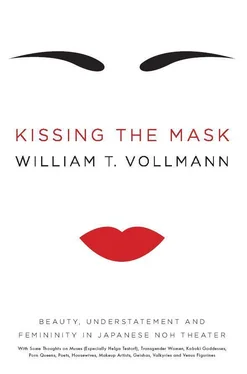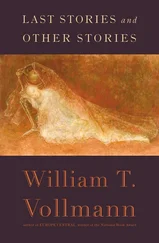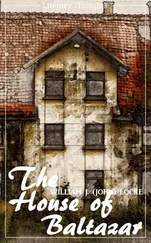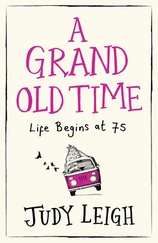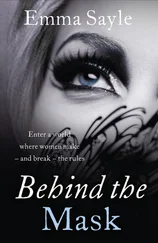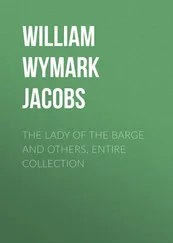But here he is in “Okina.” “The mask is most important always .” The drama begins. Slowly, silently, out creeps a kimono’d figure bearing a red-tied mask-box; then at Noh’s customary wide intervals come two more apparitions, and the rainbow curtain, the womb’s lip, trembles shut behind them. “Okina,” which means “old man,” predates most of the other Noh plays in its original form of three ritualistic dances. In fact, it cannot be called a play at all. Only in “Okina” will Mr. Umewaka mask himself onstage. Other masks are works of art, living tools. The Okina mask is something more. It now lies waiting in the red-tied box.
The foremost figure slowly kneels, bearing the precious box, which is itself, if I understand correctly, a Shinto shrine, and by now a file of celebrants waits onstage behind Mr. Umewaka, who approaches naked-faced, kneels, bows, his hand touching that endlessly lustrous stage; and he makes many graceful motions with his sleeve. Presently the mask-bearer also kneels down before him and takes the box. Mr. Umewaka gazes serenely into space. He begins to sing. The box is slid forward and, after some ceremony, opened. On the upper tray, the pallid, ancient mask gazes up into spaces we cannot see. (On the lower tray lies Black Jo, which is equally sacred.) The chorus sings in considerably higher-pitched voices than I usually hear, faster and faster, the flute livelier; the rigid figures seem more than ever to be enacting a ceremony, rather than a drama; the chant runs very fast and full now; and the man who had been kneeling in front of Mr. Umewaka now comes forward, sings, wings his sleeves almost viciously, and stamps. Still the dead mask gazes upward. Mr. Umewaka takes it in his hands and presses it to his face while a helper kneels behind him to assist with the tying; then they all chant and the flute thrills and the dancer stamps, because Mr. Umewaka is literally becoming divine.
“Does the ceremonial aspect of ‘Okina’ feel special to you?” I’d asked him, and he said, “This is an extremely special thing since I’m becoming the god. At least formally, that’s what it means,” and he laughed a little awkwardly, as people do when they find themselves compelled to speak of sacred things to outsiders who probably will never understand.
Another great Noh actor, the late Mr. Kanze Hideo, said to me: “It’s like praying to the god, wishing for a good harvest. 25So first you have a box containing the mask. You bring it to the stage and first Okina bows to the god and sits down. The box is brought to you and you take out the mask. From there, it starts. From the beginning, you say words of prayer without the mask, and then a child or young actor dances, wishing for a good harvest, and when he’s doing that you put on the mask and then the god comes into you and then Okina dances.”
In the old days, an “Okina” performer had to abstain from sex and meat for twenty-one days prior to the rite; his food was prepared over a separate fire, and by a man. “Today we do this just for one day,” Mr. Umewaka said. “Even meeting a woman is prohibited, but practically speaking, well, I’m staying at a hotel, and I don’t know who cooks my food, and there are women in the lobby, so what can I do?” — I asked what his religious beliefs might be, and how they relate to Noh, and he said, “I don’t have any particular creed, frankly speaking. I don’t think I believe in God, but I worship my ancestors.” But now (although he has assured me that he never tries to enter the role, that he always remains the individual Umewaka Rokuro) he is God indeed — Okina. He kneels, ancient and strange; he is the old man of the wild places; and he upraises his kimono-sleeves, opens his fan, and begins to dance, his mask, which in photographs I’d thought almost comic, now knowing and terrible. His kimono bears an almost Celtic pattern of circles. It is, of course, Heian period costume. He sings. His voice is not as deep as a Wagnerian Wotan’s, more sensitive, less dark, not quite reedy, like a night breeze blowing through a mountain gorge. The eerie hooting of the drummer could be an owl’s voice. Okina sweeps his fan outward in a distant, inhuman way; he advances silently, in slowly sliding steps. Then he stops to gaze down, down through the stage while the drummers sing; they’re his night birds. To achieve his effect, he requires neither falling cherry blossoms nor the blacknesses of curving cherry tree branches which framed him that night at Yasukuni Shrine: He flies across the abstraction of the naked stage. Sometimes the golden fan almost hides his mask-eyes; then he whirls it aside. In due time he will remove this mask with equal ceremoniousness, coiling its fastening-string in a diagonal caress. Then he will again be Mr. Umewaka, who is gracious and smiling and old.
Once I wanted to know how he defined beauty and how he created it. He said to me: “This is very personal. I think, well, sometimes you just look at this drinking glass and you feel beauty, and sometimes you don’t like the glass at all. When I think about Noh, it seems that Noh itself can be considered beauty. The masks, the costumes, those are beautiful, but Noh itself is the beauty. All the time I try to orient my mental state toward that. I see beautiful things and feel beauty and I try to do that as much as I can…” I have heard him say that in his kindly old man’s voice, and now I hear that strange other voice issuing from behind the mask of the ancient frozen god with his upspread fan…
Roles, Rules, Props
This book cannot pretend to give anyone a working knowledge of Noh. Only a Japanese speaker who has studied Zeami and the Heian source literatures, learned how to listen to Noh music and what to look for in Noh costumes, masks and dances could hope to gain that, and then only after attending the plays for many years. Zeami insisted that “in making a Noh,” the playwright “must use elegant and easily understood phrases from song and poetry.” Indeed, so easily understood must those phrases have been that one lord complained about the shogun’s attentions to the child performer Zeami: “ Sarugaku ,” 1the old name for Noh, or for the concatenation of jugglery, puppet-shows, etcetera, that Noh grew out of, “is the occupation of beggars, and such favor for a sarugaku player indicates disorder in the nation.” But century buries century, and the performances refine themselves into an ever nobler inaccessibility, slowing down (some now require at least double the time on stage that they did when Zeami was alive), evolving spoken parts into songs, clinging to conventions and morals now gone past bygone; 2as for me, I look on like an ape in a cage.
Be that as it may, Noh has enlarged my capabilities of discrimination and touched my feelings in spite of my inability to construe many of its symbols, not to mention its very words. The shocking beauty of Yuya, the way the dead boy Umewaka 3can sing me to the verge of tears, the hellish malice projected by Princess Rokujo’s spirit, had I witnessed their equivalents in my own life I would have treasured only the first, whereas the astonishing refinement of their stylization in Noh makes them all equally precious to me. (Noh expresses a combination of verisimilitude and elegant movements; Zeami says that a master must be equally proficient in each.)
Great art projects a sense of inexhaustibility. In literature, particularly in poetry, this may be accomplished through ambiguity : Beneath each and every meaning that I can descry lie others, so that rereading holds out the prospect of new subtleties, inversions, secret codes and ineffabilities. To be sure, the patterns on a surihaku Noh under-kimono may end in monochrome wherever they cannot be seen. But from within my ape’s cage, it seems that the greatest Noh plays offer me still more inexhaustibility than any concatenation of words in my own language, even those of Shakespeare. “King Lear” is so literally profound that the deepest sounding will never plumb it. “Izutsu” is doubly deep to me because I can never hope to know but approximations of the words; then triply deep thanks to Chinese and Japanese allusions only a few of which I recognize. In an adjacent cage, two of my fellow apes forlornly report that translating Narihira, to whose verses Noh is indebted, produces a “feeling one has the words right and everything else wrong” due to the poet’s “aural, syntactical perfection.” But precisely because great art is great, it achieves its infinitude not by relying on mere incomprehensibility or difficulty, but rather through fidelity to its appropriate grammar. In the case of Noh, of course, that grammar involves indirection, understatement, allusion to a substantial corpus — and a degree of obfuscation. Around the beginning of the thirteenth century, the priest Shun’e advises his disciple Chomei that
Читать дальше
